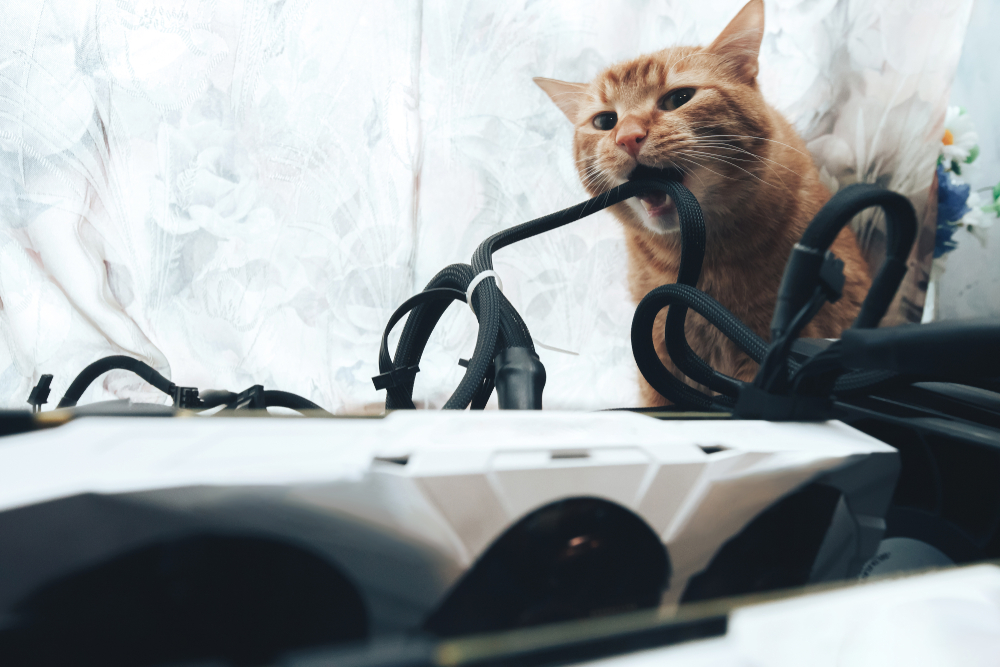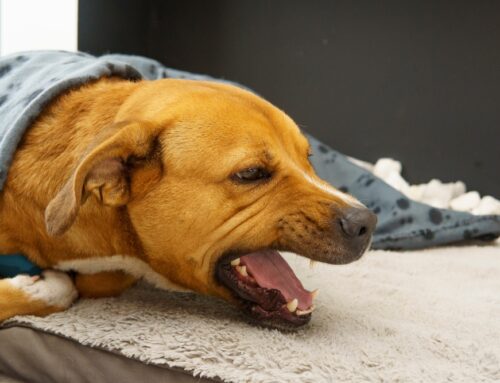If you’re bringing home a pet for the first time, or welcoming another member to your existing pet crew, your home may not be adequately prepared. Hazards abound inside your home, which you may not recognize until your pet finds them. The best way to ensure your new pet’s safety is by keeping them confined whenever they are not directly supervised, and then adding other safety layers. The Oliver Animal Hospital team in South Austin wants to share our pet-proofing tips, so you can avoid making common mistakes and keep your pet safe in their new home.
#1: Secure cabinets and drawers
Dogs and cats are curious by nature, and many will figure out how to open low cabinets or drawers to find the treasures inside. This will not only make a mess, but also could expose pets to dangerous toxins. Baby latches on all low drawers and cabinets will safely and easily keep pets out, and necessities in.
#2: Control the cords
Cord chewing not only ruins your electronics, but also can burn or shock your pet and cause serious injuries. You can purchase commercial cord organizers that group cords together and move them out of the way, so they are less tempting to chew. Cord sleeves made from plastic, metal, or rubber provide an extra chewing protective layer, and you can take one more step and apply bitter or citrus anti-chew sprays to deter pets from the area completely.
#3: Remove toxic plants from your home and yard
Many plant species can cause mouth irritation, stomach upset, or serious life-threatening toxicities in pets. Lilies, for example, are extremely toxic to cats, and only one small nibble can cause kidney failure and possible death. Because cats and dogs enjoy chewing and eating plant material, ensure you know the plants in your yard, and the flowers you can safely take inside. Consult a landscaper to help with the yard, and use the ASPCA list of toxic and non-toxic plants as a reference.
#4: Keep the floors clear
Pets, especially young pets, explore their environment with their mouths and will pick up and chew nearly anything you leave on the floor. Children’s toys, socks, clothes, and shoes are common pet targets that can harm your pet if swallowed. Commit to keeping the floors clear, and teach pets to chew appropriate items by trading an inappropriate item for one of their toys.
#5: Store medications, food, and cleaning supplies out of reach
Over-the-counter (OTC) medications, prescriptions, cleaning supplies, and common foods such as chocolate, onions, grapes, and raisins are all dangerous for pets. If your pet eats a toxic item, they will likely require emergency veterinary care, and could sustain permanent tissue or organ damage—or in the worst case scenario, they could pass away. Store these items in inaccessible locations and also use an extra container to provide a second protective layer, when possible.
#6: Cover trash cans
Dogs are notorious for dumpster diving whenever they get the chance, so don’t give them the chance! Trash often contains rotting or toxic foods that can make your pet sick, fatty foods that could cause pancreatitis, or inedible food-laced items, such as corn cobs, bones, or food packaging, that could lead to an intestinal blockage—a surgical emergency. Purchase tall trash cans with a sturdy base and secure cover, or install pull-out versions in the kitchen.
#7: Inspect your home for open vents or wall voids
Cats and kittens in your home for the first time will find every possible tiny space to squeeze into. If your new cat is stressed and they hide in small wall openings, you likely will have great difficulty getting them out. Ensure all vent covers are in good working condition, that your cat cannot access any unfinished home areas, and ensure you close all open voids.
#8: Restrict access to rooms with expensive furniture, rugs, or other valuables
Puppies are likely to have potty training accidents, chew inappropriate items such as furniture, and find other ways to ruin your treasured valuables. Until they learn which items are theirs and which are yours, you must take steps to safeguard your belongings. Don’t trust your new pet around expensive or sentimental items—keep them out of these rooms with gates, doors, or other barriers until they are better trained.
#9: Keep the toilet lid down

Dogs love drinking out of the toilet, which is an unsavory habit and can make them sick if the toilet isn’t the cleanest, or has recently been cleaned with bleach. Solve this problem by ensuring all household members keep the toilet lid down after use. Put up a sign to remind them!
#10: Get on your pet’s level
Once you think you’ve pet-proofed your home adequately, make another sweep to check for other hidden dangers. Get down to your pet’s level to see what sights, sounds, textures, and smells might tempt them, and remove or adjust those items.
For more pet-proofing tips in South Austin, or if your pet has a household mishap and needs medical attention, do not hesitate to contact the Oliver Animal Hospital team.







Leave A Comment